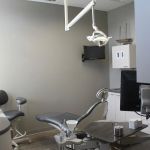
Oral Thrush Causes and Treatments – Understanding and Overcoming Oral Fungal Infections
- 1. Understanding Oral Thrush and Its Causes
- 2. Symptoms of Oral Thrush You Should Watch For
- 3. Risk Factors for Developing Oral Thrush
- 4. Effective Treatments for Oral Thrush
- 5. My Personal Experience with Oral Thrush and Treatment
- 6. How to Prevent Oral Thrush
Oral thrush, also known as oral candidiasis, is a fungal infection that affects the mouth and throat, causing discomfort and distress for those who experience it. As someone who has battled oral thrush in the past, I understand how frustrating and unsettling it can be. But with the right knowledge and treatment, it’s entirely possible to manage and even prevent this condition. In this article, I’ll walk you through the causes of oral thrush, its symptoms, treatment options, and practical steps to prevent it from recurring. If you’ve been wondering about the best ways to handle oral thrush, you’re in the right place!
1. Understanding Oral Thrush and Its Causes
Oral thrush is caused by an overgrowth of the fungus Candida albicans, which is naturally present in small amounts in our mouths. However, when the immune system is weakened or disrupted, or when certain conditions promote fungal growth, Candida can multiply uncontrollably, leading to an infection. This overgrowth results in the formation of white patches on the tongue, inner cheeks, gums, and the roof of the mouth.
What makes oral thrush particularly troubling is that it can spread quickly and affect the entire mouth, causing both physical discomfort and psychological distress. The good news is that with proper treatment, oral thrush can be controlled effectively.
2. Symptoms of Oral Thrush You Should Watch For
When I first experienced oral thrush, the symptoms were subtle, but they soon became impossible to ignore. Here are some of the most common signs of oral thrush that you should be on the lookout for:
- White patches: The most obvious symptom is the presence of white, creamy lesions on the tongue, the roof of the mouth, inner cheeks, or gums. These patches are often painful and may bleed when scraped.
- Redness and irritation: In addition to white lesions, you might notice redness and irritation inside the mouth, particularly around the patches of fungal growth.
- Sore throat or difficulty swallowing: If the infection spreads to the throat, you may experience pain while swallowing or a persistent sore throat.
- Burning sensation: Some individuals may experience a burning sensation in their mouth, which can make it difficult to eat or drink comfortably.
- Loss of taste: In severe cases, oral thrush can affect your ability to taste food properly, adding to the discomfort.
If you notice any of these symptoms, it’s crucial to consult a healthcare provider as soon as possible. Early diagnosis and treatment can help prevent the infection from worsening.
3. Risk Factors for Developing Oral Thrush
While oral thrush can affect anyone, there are certain factors that increase the likelihood of developing this condition. Some of the most common risk factors include:
- Weakened immune system: Individuals with compromised immune systems, such as those with HIV/AIDS, cancer, or diabetes, are more susceptible to fungal infections like oral thrush.
- Use of antibiotics or corticosteroids: Long-term use of antibiotics can disrupt the natural balance of bacteria in the mouth, allowing Candida to overgrow. Similarly, inhaled corticosteroids used for asthma can also increase the risk of thrush.
- Age: Both infants and older adults are at a higher risk for oral thrush due to their more vulnerable immune systems.
- Dry mouth: Conditions that reduce saliva production, such as Sjögren's syndrome or the use of certain medications, can make the mouth more prone to infections like oral thrush.
- Smoking: Smokers are more likely to develop oral thrush, as smoking weakens the immune system and damages the natural defenses in the mouth.
Understanding these risk factors can help you take preventive measures to reduce your chances of developing oral thrush.
4. Effective Treatments for Oral Thrush
Once I realized I had oral thrush, the next step was finding the right treatment. Fortunately, there are several effective treatments available, ranging from antifungal medications to home remedies. Here are some of the most commonly used treatments:
- Antifungal medications: The primary treatment for oral thrush is antifungal drugs, which are available in various forms, including oral tablets, mouthwashes, and lozenges. Common antifungal medications include fluconazole, clotrimazole, and nystatin.
- Prescription mouthwashes: Your dentist or doctor may recommend a medicated mouthwash to help clear up the infection and alleviate symptoms.
- Home remedies: While not a substitute for medical treatment, certain home remedies like saltwater rinses or using yogurt with probiotics can help soothe the mouth and promote healing.
In my case, using an antifungal mouthwash helped clear up the infection within a week. However, it’s important to follow your healthcare provider’s advice and complete the full course of treatment to prevent the infection from returning.
5. My Personal Experience with Oral Thrush and Treatment
When I first had oral thrush, I was taken aback by how quickly it developed and how uncomfortable it was. I’d never experienced anything like it before. The white patches in my mouth, coupled with a burning sensation, made it difficult to eat or even speak comfortably. After visiting my dentist, I was prescribed antifungal medication, and within a few days, I noticed significant improvement. I was relieved to know that with the right treatment, oral thrush was manageable and didn’t require any invasive procedures.
6. How to Prevent Oral Thrush
Now that I’ve dealt with oral thrush, I’m more committed than ever to maintaining good oral hygiene to prevent its recurrence. Here are a few preventive measures I’ve incorporated into my routine:
- Maintain good oral hygiene: Brushing my teeth at least twice a day and flossing regularly helps keep my mouth clean and reduces the likelihood of fungal overgrowth.
- Use a soft toothbrush: A soft-bristled toothbrush helps avoid irritation of the gums and mouth, which can create an environment for fungal infections.
- Avoid mouthwashes with alcohol: Alcohol-based mouthwashes can dry out the mouth, making it more susceptible to infections. I now use alcohol-free mouthwash to keep my mouth moist.
- Eat a balanced diet: Maintaining a healthy diet and staying hydrated supports my immune system and reduces the risk of infections.
If you’re dealing with oral thrush or want to prevent it from occurring, make sure to visit Dentistry Toothtruth for more information and tips on oral health. Understanding how to take care of your mouth can help prevent infections and keep your smile healthy!







 Loma Linda University Center for Dentistry and Orthodontics4.0 (24 review)
Loma Linda University Center for Dentistry and Orthodontics4.0 (24 review) James S Minutello, DDS and Regina D Minutello DMD MS Inc4.0 (255 review)
James S Minutello, DDS and Regina D Minutello DMD MS Inc4.0 (255 review) MapleTree Pediatric Dentistry4.0 (102 review)
MapleTree Pediatric Dentistry4.0 (102 review) Harbor Cove Dental5.0 (191 review)
Harbor Cove Dental5.0 (191 review) Mesa Valley Modern Dentistry4.0 (344 review)
Mesa Valley Modern Dentistry4.0 (344 review) Rivers Family Dentistry4.0 (365 review)
Rivers Family Dentistry4.0 (365 review) The Importance of Oral Health Education During Pregnancy for a Healthy Pregnancy
The Importance of Oral Health Education During Pregnancy for a Healthy Pregnancy Best Tips for Brushing Your Teeth Properly for Healthy Gums: Essential Techniques for Oral Health
Best Tips for Brushing Your Teeth Properly for Healthy Gums: Essential Techniques for Oral Health Why Skipping Dental Checkups Can Lead to Bigger Oral Health Problems
Why Skipping Dental Checkups Can Lead to Bigger Oral Health Problems Advantages of Porcelain Dental Restorations
Advantages of Porcelain Dental Restorations How Can Diabetes Cause Tooth and Gum Problems? Preventing and Managing Oral Health Issues
How Can Diabetes Cause Tooth and Gum Problems? Preventing and Managing Oral Health Issues Healthy Habits for Promoting Good Oral Health and Hygiene: Tips for a Healthy Smile
Healthy Habits for Promoting Good Oral Health and Hygiene: Tips for a Healthy Smile